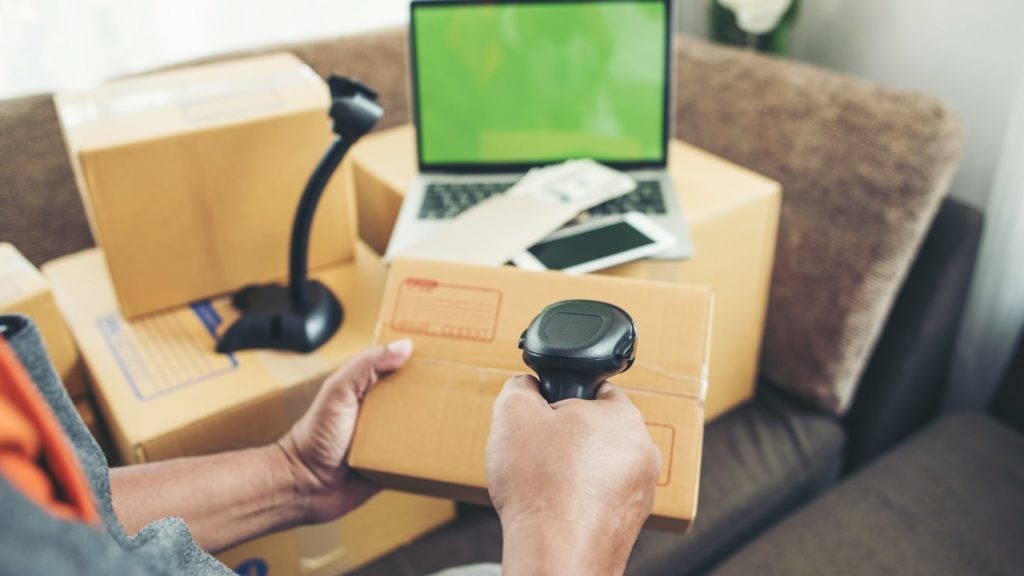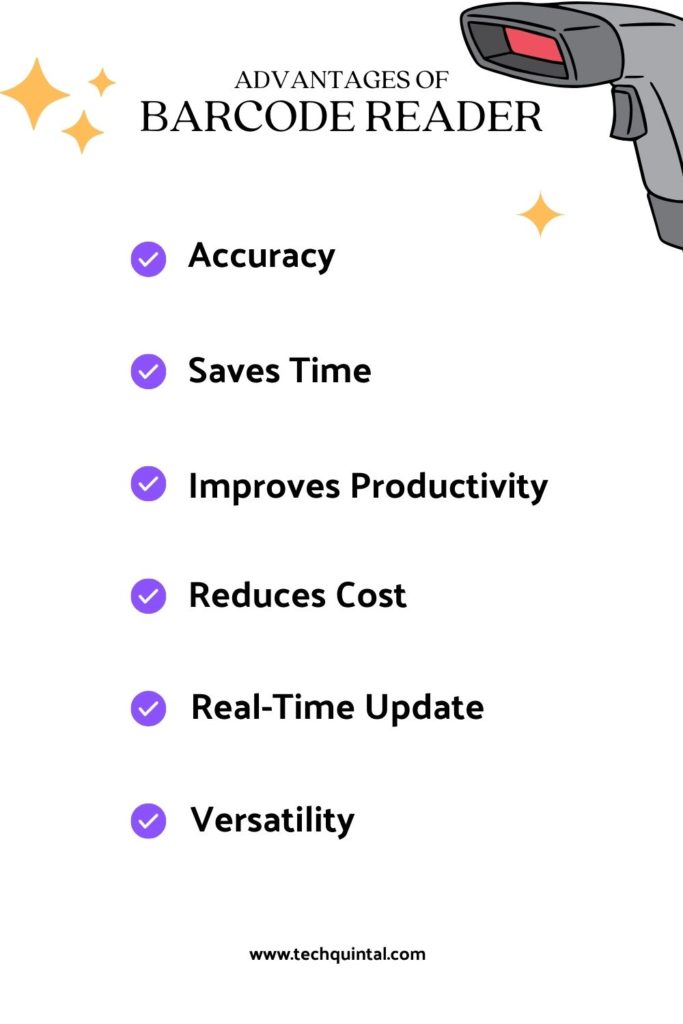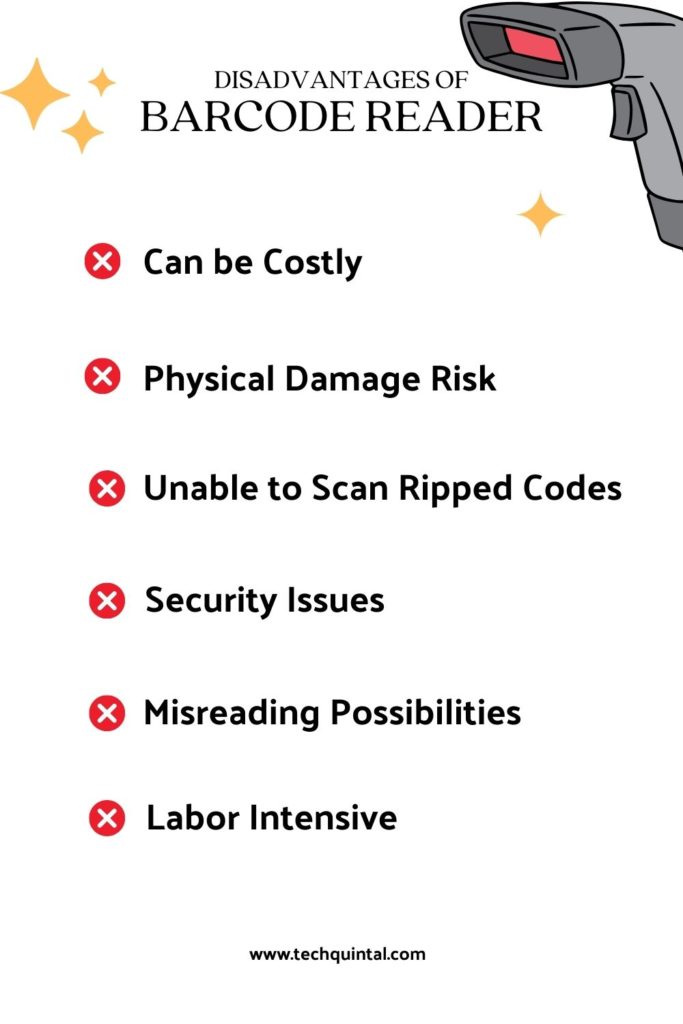
Did you know the first barcode appeared on a pack of chewing gum from Wrigley company in June 1974? Barcode technology has established its name in the modern world. So much so that the barcode scanner became indispensable. From library management systems to tracking inventory to biometry, it has wide applications. In simple terms, the barcode reader is a device that includes an illumination system, sensor, and decoder. It scans or reads the barcode symbol, decodes the data, and transmits it to the computer in a human-readable format.
Broadly speaking, barcode readers are classified into the following subtypes: pen reader, laser reader, CCD (Charge Couple Device) reader, and camera-based reader.
With the light source and photodiode, the pen reader decodes the barcode into digital data and transmits it for processing. The laser reader uses mirrors and lenses to translate into a digital signal readout of the barcode. In CCD readers, a hundred tiny LED lights are featured that provide a digital snapshot of the barcode.
Lastly, the camera-based readers use advanced digital image processing technology to scan the barcode. Now that we have covered the brief overview of the barcode reader, let’s move on to its advantages and disadvantages.
Advantages of a barcode reader

The most important benefit of a barcode reader is that it is universally accepted because of its high efficiency. The following are some of its other advantages.
A barcode reader is highly accurate
Before barcode technology, the inventory was managed through manual processing. As you might have guessed, the introduction of human errors with their involvement is inevitable. That is why the traditional methods of inventory management were quickly replaced when advanced barcode technology was developed.
Firstly, it reduced human errors dramatically. This brought speed and high accuracy. It also eliminated manual changes in the spreadsheet that reduced the error in keystrokes. This is to say, with barcode readers’ data entry, the inventory can be accurately updated on the go.
It saves time
You can retrieve records from the database in a matter of seconds using barcode readers. In fact, when they obtain data, they scan the information directly to the central system. This makes the information readily available, therefore saving time on data entry and retrieval.
Not only this, the device is simple to use and employees only need a couple of minutes to master reading barcodes with the scanner. It eventually saves time in training.
It improves productivity
With high accuracy and time-saving, enhanced productivity of the barcode scanner is a predictable trait. Across various industries, barcode readers have proved to be invaluable in collecting, processing, transmitting, recording, and managing data. It has advanced applications ranging from quality control tracking to project tracking. Ultimately, this has improved operational efficiency immeasurably and increased the productivity of the businesses.
A barcode reader can reduce costs
Businesses can use a barcode reader to save costs in numerous ways. Firstly, it reduces human errors and increases accuracy which eliminates costly mistakes. Secondly, it improves processes, leading to faster inventory turnovers. Lastly, it makes the training process easier and reduces the training time which eventually reduces the cost associated with it.
Consequently, paying extra for the training time of new employees and compensation for the ones training them is eliminated.
It provides real-time update
The barcode reader processes information at a greater speed. Because of this, real-time data about inventory levels or sales are readily available. The quick and reliable data then facilitates various applications. It makes it possible to fully utilize inventory and human resources.
Additionally, it allows businesses to make better and more informed decisions. Also, real-time data provides a competitive advantage and puts companies in a better position to respond to change quickly.
Reduces paperwork
Using a bar code reader will allow you to reduce paperwork significantly. As everything is automated, you do not have to keep a long list of items on paper. This can be very eco-friendly because of the low paper usage, saving a ton of trees.
Disadvantages of a barcode reader

After going through the benefits, you might be compelled to explore this option for your business. But just like any other device, the barcode reader comes with a set of drawbacks that we can’t turn a blind eye to. Therefore, the following are some downsides of barcode readers.
Barcode readers may incur heavy expenses
With barcode readers, there’s no one-size-fits-all solution. This means without thorough research, implementing barcode readers can incur more costs instead of savings. For instance, large corporations can implement the barcode scanning system as they can easily get higher ROI (return on investment). But the same is not true when it comes to small businesses.
In such cases, performing a cost-benefit analysis is a must. Factors such as cost and effort to implement the advanced technologies and the cultural shift that it will bring need to be considered.
A barcode reader is susceptible to physical damage
Like any other device, the barcode reader is prone to physical damage. There is a possibility that it might not function properly due to wear and tear. Moreover, the cost of repairs is quite high. Therefore, to restore the order and continue with the processes, it is a good alternative to replace it.
Additionally, there are other limitations to the barcode scanner. A few are restrictions on scanning data and information and keeping the device and the barcode no further than 15 to 20 feet.
It cannot scan ripped or damaged barcodes
The barcode is exposed on the outside of the product for scanning purposes. But in situations where the barcode label is mistreated or gets damaged due to external factors such as the environment, scanning becomes a problem. This is because even if one part of the barcode is ripped or damaged, the barcode reader cannot scan it properly.
Barcode readers can have security concerns
The barcode reader can bring a security risk. Firstly, it leverages USB technology and acts as a secondary keyboard to the system. If the users end up scanning the malicious barcodes set up by hackers, they can easily gain access to the barcode reader.
It allows them to access the system and potentially infiltrate the entire network. There are several ways to combat these challenges. Using firewall technology and potential threat pattern-recognizing alarms are a few.
Difficult to read if not in line-of-sight
In order for the bar codes to work, you should accurately put them in the line-of-sight. If not, the bar code will not be read accurately. Compared to QR codes, bar codes need much more attention to be read properly. Even though newer devices have improved their line-of-sight drastically, this is still a known issue.
Additional Advantages and Disadvantages of Bar Code Readers
| Advantages | Disadvantages |
|---|---|
| 1. Fast processing | 1. Limited data capacity |
| 2. High accuracy | 2. Reading issues (damage, dirt) |
| 3. Easy product tracking | 3. Significant initial investment |
| 4. Cost-effective over time | 4. Training requirement |
| 5. Versatile applications | 5. Tech-dependency risks |
| 6. Reduces manual labor | 6. Maintenance costs |
| 7. Saves time | 7. Incompatible with some systems |
| 8. Simplifies inventory management | 8. Can’t read if not in line-of-sight |
| 9. Customer experience improvement | 9. Barcodes can be easily copied |
| 10. Easily upgradeable | 10. Can only read one at a time |
| 11. Reduces paperwork | 11. Potential scanner malfunction |
| 12. Enables real-time updates | 12. Scanner battery life issues |
| 13. Checkout processes get easier | 13. Limited range of scanning |
| 14. Simplifies price changes | 14. Difficulty reading curved surfaces |
| 15. Facilitates data sharing | 15. Readability affected by lighting |
| 16. Reduce stock discrepancies | 16. Can’t read multiple barcodes simultaneously |
| 17. Better control over assets | 17. Doesn’t work well on reflective surfaces |
| 18. Decreases the chance of theft | 18. External factors can interfere with the signal |
| 19. Scalable for business growth | 19. Inability to read through certain materials |
| 20. Low operational costs over time | 20. Insufficient for complex data tracking |